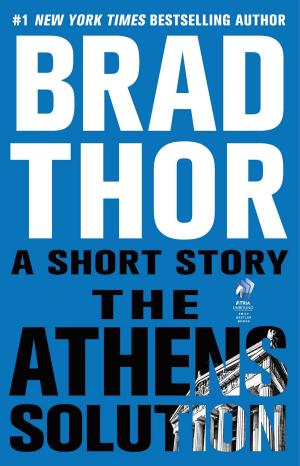| Author: | Joanna Pitman | ISBN: | 9781416539605 |
| Publisher: | Atria Books | Publication: | April 23, 2007 |
| Imprint: | Atria Books | Language: | English |
| Author: | Joanna Pitman |
| ISBN: | 9781416539605 |
| Publisher: | Atria Books |
| Publication: | April 23, 2007 |
| Imprint: | Atria Books |
| Language: | English |
Raphael's St. George and the Dragon is the work of a genius -- an exquisitely rendered vision of heroism and innocence by one of the greatest painters of all time. Yet the painting's creation is only the beginning of its fascinating story, which spans centuries of power play and intrigue, and has made it a witness to the rise and fall of the great powers of the Western world as it seduced its owners to ever greater heights of corruption and greed.
Raphael's masterpiece was commissioned by Duke Guidobaldo da Montefeltro, the ruler of Urbino, in 1506. Raphael was only twenty-three years old, but he had already begun to acquire a reputation as a painter who was as ruthless in his pursuit of money as he was talented. The duke sent the painting to England's King Henry VII as a thank-you for naming him a knight in the Order of the Garter.
The painting then mysteriously disappeared for one hundred years until King Charles I saw it hanging in the collection of the Earl of Pembroke and acquired it for a book of Holbein drawings. After Charles was beheaded in 1649, his collection was broken up and the painting made its way to the private gallery of the third-richest man in France, where it was ensconced in its own special room. Thirty years later, the philosopher Diderot was instructed by Catherine the Great of Russia to buy it for her vast collection at the Hermitage.
The heroic curators of the Hermitage protected St. George and the Dragon from fire, water, and the anarchists of the Russian Revolution, until Joseph Stalin sold it in 1930 to raise cash. The secret buyer was Andrew Mellon, Treasury Secretary of the United States, who in doing so blatantly violated a U.S. sanction against doing any business with Soviet Russia. Mellon eventually founded The National Gallery in Washington, D.C., where St. George and the Dragon rests to this day.
Exceptionally written and breathlessly paced, The Dragon's Trail is a microhistory that touches on the rise of the Tudors, the downfall of a Stuart, the twilight of the French aristocracy, the terrors of the Bolshevik revolution, and the depths of the Cold War -- all witnessed by one painting that inspired the best and the worst instincts in its owners.
Raphael's St. George and the Dragon is the work of a genius -- an exquisitely rendered vision of heroism and innocence by one of the greatest painters of all time. Yet the painting's creation is only the beginning of its fascinating story, which spans centuries of power play and intrigue, and has made it a witness to the rise and fall of the great powers of the Western world as it seduced its owners to ever greater heights of corruption and greed.
Raphael's masterpiece was commissioned by Duke Guidobaldo da Montefeltro, the ruler of Urbino, in 1506. Raphael was only twenty-three years old, but he had already begun to acquire a reputation as a painter who was as ruthless in his pursuit of money as he was talented. The duke sent the painting to England's King Henry VII as a thank-you for naming him a knight in the Order of the Garter.
The painting then mysteriously disappeared for one hundred years until King Charles I saw it hanging in the collection of the Earl of Pembroke and acquired it for a book of Holbein drawings. After Charles was beheaded in 1649, his collection was broken up and the painting made its way to the private gallery of the third-richest man in France, where it was ensconced in its own special room. Thirty years later, the philosopher Diderot was instructed by Catherine the Great of Russia to buy it for her vast collection at the Hermitage.
The heroic curators of the Hermitage protected St. George and the Dragon from fire, water, and the anarchists of the Russian Revolution, until Joseph Stalin sold it in 1930 to raise cash. The secret buyer was Andrew Mellon, Treasury Secretary of the United States, who in doing so blatantly violated a U.S. sanction against doing any business with Soviet Russia. Mellon eventually founded The National Gallery in Washington, D.C., where St. George and the Dragon rests to this day.
Exceptionally written and breathlessly paced, The Dragon's Trail is a microhistory that touches on the rise of the Tudors, the downfall of a Stuart, the twilight of the French aristocracy, the terrors of the Bolshevik revolution, and the depths of the Cold War -- all witnessed by one painting that inspired the best and the worst instincts in its owners.















